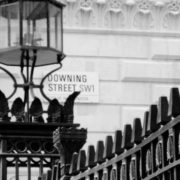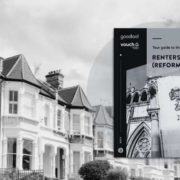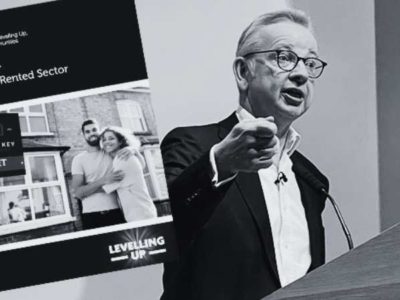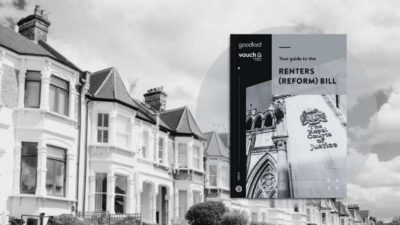August saw a further softening in the annual rate of house price growth to -5.3%, from -3.8% in July, the weakest rate since July 2009.
Prices fell by 0.8% over the month, after taking account of seasonal effects.
The softening is not surprising, given the extent of the rise in borrowing costs in recent months, which has resulted in activity in the housing market running well below pre-pandemic levels.
For example, mortgage approvals have been around 20% below the 2019 average in recent months and mortgage application data suggests the weakness has been maintained more recently.
Nevertheless, a relatively soft landing is still achievable, providing broader economic conditions evolve in line with our (and most other forecasters’) expectations, commented Robert Gardner, Nationwide’s Chief Economist.
Gardner continued, in particular, unemployment is expected to remain low (below 5%) and the vast majority of existing borrowers should be able to weather the impact of higher borrowing costs, given the high proportion on fixed rates, and where affordability testing should ensure that those needing to refinance can afford the higher payments.
While activity is likely to remain subdued in the near term, healthy rates of nominal income growth, together with modestly lower house prices, should help to improve housing affordability over time, especially if mortgage rates moderate once Bank Rate peaks.
Cash transactions proving more resilient in a sluggish market
In the first half of 2023, the number of completed housing transactions was nearly 20% below pre-pandemic (2019) levels and c.40% lower than in the first half of 2021 – though the latter reflects the boost to activity from pandemic-related shifts in housing preferences, the stamp duty holiday and ultra-low borrowing costs.
An examination of the composition of transactions reveals that cash purchases, though down from the 2021 highs, have been remarkably resilient, while purchases involving a mortgage have slowed much more sharply.
Home mover completions (with a mortgage) in the first half of 2023 were 33% lower than 2019 levels, whilst first-time buyer numbers were c.25% lower.
Buy-to-let purchases involving a mortgage were nearly 30% below pre-pandemic levels. By contrast, cash purchases were actually up 2%.
The relative weakness of mortgage activity reflects mounting affordability pressures as a result of the sharp rise in mortgage rates since last autumn, which would not have affected cash buyers.
Indeed, a first-time buyer earning the average wage and buying a typical first-time buyer property with a 20% deposit would now see their monthly mortgage payment absorb over 40% of their take-home pay (with a mortgage rate of 6%) – well above the long run average of c.29%.
For owner-occupiers buying with a mortgage, there has also been a modest shift in the type of properties being purchased.
While transactions are lower than pre-pandemic levels across all property types, the biggest decline has been in detached houses.
There are signs that buyers are looking towards smaller, less expensive properties, with flats seeing a smaller decline.
This shift may, in part, reflect the ending of the Help to Buy scheme, which helped those with a smaller deposit purchase a newly built home.
Flats have also remained relatively more affordable; average prices have risen by only 13% since the onset of the pandemic, compared with 23% for detached properties, Gardner concluded.
| Headlines | Aug-23 | Jul-23 |
|---|---|---|
| Monthly Index* | 512.1 | 516.0 |
| Monthly Change* | -0.8% | -0.3% |
| Annual Change | -5.3% | -3.8% |
| Average Price(not seasonally adjusted) | £259,153 | £260,828 |
Jeremy Leaf, north London estate agent and a former RICS residential chairman, comments:
“Cash buyers are more dominant in the market as house prices continue to be supported by a shortage of stock and fewer, but more serious, buyers as part of a two-tier market.
Serious sellers are recognising they may not achieve exactly what was originally anticipated but, bearing in mind that four out of five are also buyers, they‘re concentrating on the difference between the two prices rather than headline figures.
Those sellers refusing to recognise the new realities and that prices are softening, remain on the market and often have to accept lower than their original valuation in order to eventually achieve that move.”
Mark Harris, chief executive of mortgage broker SPF Private Clients, comments:
“Until we see a consistent and more considerable decline in mortgage pricing, buyers relying on mortgages are inevitably going to be more price sensitive in coming months on the back of affordability concerns.
With another 25 basis points interest rate rise expected from the Bank of England later this month, we are not out of the woods just yet when it comes to rising mortgage costs.
However, a number of lenders have been reducing their fixed-rate mortgages on the back of better-than-expected inflation news.
This has led to a calming of Swap rates, which underpin the pricing of fixed-rate mortgages, after a period of considerable volatility and bodes well for further reductions in coming weeks.”
Alex Lyle, director of estate agent Antony Roberts, comments:
“A combination of the summer holiday season and buyers being more cautious resulted in a quieter August for viewings, which was also seen in the number of market appraisals carried out.
Having said that, the recent volume of agreed sales has been very reassuring and those properties that have come to market or are getting ready to be launched in September appear to be committed vendors with an understanding of current market conditions.
Prime addresses, and in particular family houses, continue to attract significant interest and are achieving strong prices.
Properties that may be comprised in terms of their location or layout, are taking longer to sell and it is these properties which need to be competitively priced.”
Anna Clare Harper, CEO of sustainable investment adviser GreenResi, comments:
“With the average house price hitting £259,153, 5.3 per cent below the August 2022 peak, fears of a house price crash are overblown.
The softening from peak pricing levels is not surprising, as higher interest rates make buying and owning property less affordable regardless of house prices.
Up to two million property owners are facing double or triple their previous housing costs by the end of this year as their variable-rates rise or fixed-rate terms come to an end.
Some will need to sell at any price.
New purchasers relying on mortgages are no longer able to pay 2022 prices, which were artificially buoyed up by the stamp duty holiday and ultra low interest rates.
Cash purchasers are not directly affected by rate rises, and this is significant for the market since outright home ownership with no mortgage is the largest – and luckiest – group of property owners.
For this reason, fears of a price crash are unrealistic.”
Tomer Aboody, director of property lender MT Finance, comments:
“The declining number of transactions, combined with negativity in the market, is resulting in a softening of property prices, a trend which has been evident for several months.
Constant interest rate rises are making affordability difficult for buyers who are trying to move, with many having little option but to wait until rates settle.
With some better news on inflation recently, it would be useful if the Bank of England postponed the next rate rise, giving the market some breathing space to adjust.”
Chris Druce, senior research analyst at Knight Frank, comments:
“The Bank of England’s rate setting decision later this month, and the messaging around it, will be a key moment for the UK housing market.
If, as believed, we are near the peak of the rate-rising cycle we can expect buyer confidence to improve in the second half of this year, after a challenging period that has seen people’s spending power reduced and activity slow.
Surety about rates will allow buyers to plan more effectively, although affordability will continue to be stretched and we expect pressure on pricing and transaction volumes to continue through this year and next.
However, demand should prove more resilient than expected given the shock-absorber effect of strong wage growth, lockdown savings, the availability of longer mortgage terms, flexibility from lenders and the popularity of fixed-rate deals in recent years.”





















Comments